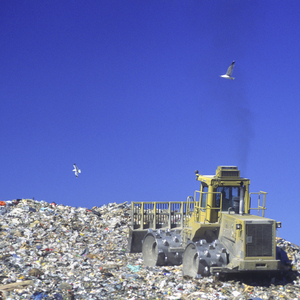SEER to supply N2SPlus systems to landfill gas projects




November 3, 2016
BY Strategic Environmental & Energy Resources Inc.
Strategic Environmental & Energy Resources Inc., a provider of environmental, renewable fuels and industrial waste stream management services, announced its wholly owned subsidiary, MV Technologies, has secured purchase orders for its proprietary H2SPlus System for a fourth New Jersey landfill and MV's first landfill project in Massachusetts. The two purchase orders have an initial value of $1.4 million and bring MV's total installed base of H2SPlus Systems at landfills to 14, treating a combined 40,000 standard cubic feet per minute (SCFM) of landfill gas (LFG) across the United States. MV has many other installations of its other systems at refineries, breweries, asphalt plants, and agricultural sites across the nation.
The New Jersey landfill is comprised of a six-vessel H2SPlus System with a treatment capacity of 3,500 SCFM. This system will effectively remove approximately 600 pounds of deadly hydrogen sulfide (H2S) on a daily basis, which translates into over 200 tons per year of harmful SO2. H2S upon combustion is converted into SO2 and is one of the five major regulated greenhouse gases contributing to climate change. This proprietary design and MV's proprietary media, BioActive Media or BAM, enable the landfill operator to meet site-specific regulatory criteria surrounding air pollution control rules while meeting their expectations for capital and operating expenditures. When fully operational in June of 2017, the project will represent one of MV's largest H2SPlus System installations to date.
MV's first landfill gas project in Massachusetts is designed to treat 1,300 SCFM of LFG with a H2S concentration of 1600 ppm down to 200 ppm of H2S. The landfill will incorporate a two-vessel H2SPlus System and is expected to remove approximately 100 tons of SO2 from the site's emission on an annual basis. Completion of the project is expected in December and will ensure compliance with Massachusetts specific emission standards.
Advertisement
"The momentum with our H2SPlus System deployments in the LFG market is accelerating and we believe the end-markets for our technology are not only recognizing the superior performance and reliability of our systems, but also the operational savings while complying with today's increasingly stringent air pollution requirements," said John Combs, CEO of SEER. "The timing for MV's increase in market share in the landfill gas market couldn't be more fortuitous as a recent study surrounding the waste-to-energy market concluded that while waste-to-power is flat lining in the United States, fuels from landfill gas are on the upswing. Another boost to the LFG market will be the worldwide mainstreaming of public policies that aim to reduce carbon intensity of the energy sector," concluded Combs.
"At expected flow rates and projected H2S concentrations, the two projects incorporating 8-vessel systems in total will require approximately 20,000 cubic feet of MV's BioActive Media on an annual replacement basis," said Tom Jones, president of MV. "To further enable MV to realize the growing market opportunity, we are actively expanding both our domestic and international sales footprint with strategic partnerships. MV has recently entered into business development agreements with three senior marketing representatives with extensive landfill gas experience on the east coast of the United States. We concentrated our initial efforts on the Eastern U.S. because of its high population centers and landfill site concentrations as well as its stringent emission regulations. We are now looking at the west coast to establish similar arrangements.
Advertisement
"Most recently we've established a strategic partnership with one of the world's largest biogas upgrading companies to represent MV in the New Zealand, Australian and Southeast Asian markets. This relationship is in response to recent regulatory pressure to reduce greenhouse gas emission from Palm Oil Mill Effluent. The increased demand for palm oil has increased the number of installations of anaerobic digesters to create and capture methane in a controlled manner. Most POME facilities intend to use the biogas to generate electricity to offset their electrical needs and their reliance on fossil fuels. The biogas from the POME has high concentrations of H2S that must be removed before it can be economically utilized to generate electricity. There are over 1,000 POME facilities in Southeast Asia that will have to remove H2S from their biogas if they intend to utilize this resource," explained Jones.
"I am also encouraged by the recent changes in the emission standards required by the EPA, which dramatically increases the number of landfills that will be required to install landfill gas (LFG) collection systems," continued Jones. "As the regulations become stricter, it increases MV's opportunity to sell more treatments systems and the continued ongoing sales of the associated BAM to remove H2S from the landfill gas."
Upcoming Events





